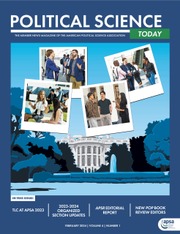For each presidential election I use my presidential vote equation to predict the two-party vote share. The equation was first developed in Fair (1978). A more recent discussion is in Fair (2009). The latest results are on my website (https://fairmodel.econ.yale.edu/). A few specification changes were made prior to the 1992 election, but the equation has not been changed since except for re-estimation after each election. The vote share is used as the measure of voting behavior since it measures aggregate voting preferences much better than does the electoral college vote share.

The theory behind the equation is that the state of the economy affects voting behavior. This seems obvious now (“It’s the economy stupid”), but it was not in the 1970’s when this work began. A good economy has a positive effect on the vote share of the incumbent party in the White House, and vice versa. The three explanatory economic variables in the equation are:
-
• G, the real per capita growth rate in the first three quarters of the election year
-
• Z, the number of ("strong growth") quarters out of the 15 before the election in which the per capita growth rate is greater than 3.2% at an annual rate
-
• P, the rate of inflation over the 15 quarters before the election. The equation is casual in that no survey or polling data are used
I made my first prediction two years ahead, in the election of November 2022. This requires forecasts of the economic variables first. In my case I use the forecasts from my macroeconomic model. The economic forecasts are updated each quarter as new data become available, which allows an update of the vote prediction. The first prediction of the Democratic share of the two-party vote, November 23, 2022, was 48.2%. The final prediction, October 30, 2024, where all the economic values were known, was 49.5%. The actual value was 49.3%, and so the predictions were quite accurate. The predictions were that the election would be very close in vote share, which turned out to be the case.
The real side of the economy (G and Z) was fairly good, which was a plus for the Democrats, but inflation (P) was high, which was a negative. The net effect was roughly a 50/50 prediction. Although the economy explains much of the variance of the vote share, it does not explain all. The standard error is about 3 percentage points. Given that the actual outcome was also about 50/50, the campaign efforts roughly cancelled each other out. Had inflation been much lower, the Democrats would likely have won according to the equation, assuming that the campaign efforts continued to cancel.
I also have an equation explaining the vote share in the House. The same three economic variables are in this equation with the same relative weights, although the absolute size of the effects is smaller. The first prediction of the Democratic share of the two-party House vote was 46.7%, and the final prediction was 47.4%. The actual value was 48.7%, so these were also accurate predictions. ■

